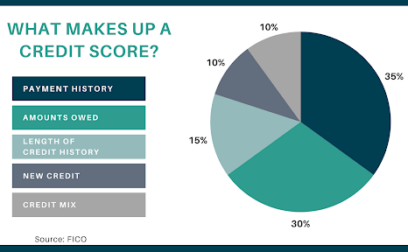TABLE OF CONTENTS
Page written by Chris Godfrey. Last reviewed on October 16, 2024. Next review due October 1, 2025.

eBay are one of the world’s biggest online marketplaces. Operating in over 190 countries and with more than 180 million worldwide buyers, the platform sells almost anything we want or need. But what’s it like to be an eBay business seller? How do you start an eBay business, what does it cost and what are the best ways to succeed? Let’s take a deep dive into this digital bazaar to find out all you need to know.
Selling on eBay is a great way to launch a low-cost online retail business. Follow these steps to create your market stall:
eBay makes it easy for individuals and businesses to list and sell items – offering personal or business subscriptions to choose from. Each subscription plan comes with its own set of benefits and fees:
Personal plans are free to operate, but if you list more than 200 items a month you’ll be charged an ‘insertion fee’ of $0.35 per extra item. You’ll also pay a ‘final value fee’ that is a percentage of an item’s total selling price (including shipping). The percentage varies from one item category to the next, but it is typically 10%.
Business plans are tiered from Starter up to Enterprise and with escalating monthly fees. The more deluxe your plan, the more free listings per month you are allowed before incurring the $0.35 per item insertion fee. Once again, you’ll be charged a ‘final value fee’ when an item sells. This fee varies up to 14.95% of the total selling price.
Choosing which plan is best for you is a trade-off between more free listings and other benefits in exchange for buying a business plan or less free item listings and benefits with a free personal plan. If you only want to sell a few unwanted or surplus items, a personal account will give you what you need. Alternatively, if you’re seeking to build a business that delivers good income and has the potential to grow into a recognized ecommerce outlet, a business plan is the way to go.
Ultimately, your ambitions, the volume of items you hope to sell and how far you wish to grow your business will influence your final choice.
| Type of plan | Personal | Business Starter | Business Basic | Business Premium | Business Anchor | Business Enterprise |
|---|---|---|---|---|---|---|
| Plan cost with annual subscription | $0 | $4.95 | $21.95 | $59.95 | $299.95 | $2,999.95 |
| Plan cost with month to month subscription | $0 | $7.95 | $27.95 | $74.95 | $349.95 | $2,999.95 |
| Free fixed-price items per month | 200 | 250 | 350 | 1,000 | 10,000 | 100,000 |
Once you’ve settled on a memorable name for your business, you must decide if you want to run the venture as a sole proprietorship, an LLC or a corporation. Although it involves more paperwork, operating as a corporation can protect you if the business does not succeed, as you are not personally responsible for the company’s debts. If you choose this route, you must submit your articles of incorporation and your EIN (employer identification number) to the secretary of state’s office in the state where you register. You can do this in-person, online, or by mail. You will have to pay a registration fee at the time of filing – typically $100.
Your customers can pay for the items you sell via a wide variety of methods – credit cards, debit cards, Apple Pay, Google Pay, Venmo and PayPal. However, since 2021, the platform has managed payments for most businesses across most eBay marketplaces. This initiative is mandatory for selling on eBay. It essentially means that eBay takes control of the end-to-end payment process, with more payment options for buyers and quicker payouts for sellers. You cannot opt out of the scheme if you wish to sell on the platform. eBay removed the option for buyers to pay with cash on pickup as of 1st October 2024.
You will need to link your bank account or a credit card to your eBay account. This ensures eBay gets paid for their services (subscription fees, item listings, final value fees, etc) if you do not have enough funds in your eBay account to cover the total due.
The next step in setting up your eBay store is to add the items you want to sell. If you’re not sure what price to set, you can research competitors on the platform to see how they price similar items. Additionally, eBay may also suggest prices based on recent sales of comparable items during the listing process. Getting your pricing right is key to attracting buyers and ensuring you get the best value for your items.
In your eBay store you can choose between two selling methods:
If you’re not making the products you sell yourself, you’ll need to buy them from other suppliers. For new eBay business sellers this could be a major hurdle, as you’ve not started to generate income from your online store. However, a business loan can help you buy your inventory and pay for other start-up costs without putting strain cash flow. Here are a few loans you could consider:
To get these types of loan you can approach banks, credit unions and online lenders one by one, or you can use the services of a loan marketplace that will immediately introduce you to a choice of loans from a range of lenders. Some marketplace platforms can also give you advice and help you with the application process. This can be especially useful for borrowers who have never taken out a business loan before.
Once you’ve made a sale, eBay recommends shipping your items no more than two days after they’re purchased. You have two shipping options – deliver goods to the buyer in person or use a shipping service.
Local delivery
In-person delivery (local pickup) works when the two parties, both seller and buyer, agree to meet so that the buyer hands over the item to the seller. Once again, be aware that the option to get paid on delivery is no longer available on eBay.
Shipping service
Depending on the location of your buyers, eBay provides integrated shipping carriers to transport and deliver your items to the buyer’s registered eBay shipping address. Domestic carriers include eBay USPS, FedEx, UPS, DHL eCommerce, OnTrac, Lasership, Spee-Dee Delivery, and Lonestar Overnight. Export carriers include USPS, FedEx, UPS, DHL eCommerce, DHL Express, eBay delivery services, RR Donnelley, Pitney Bowes, Globgistics, Landmark Global, Asendia, and Sky Postal.
Set your shipping costs
You have two options for setting shipping costs:
You could also offer free shipping to encourage sales, however, the cost of getting some low-priced items to buyers could consume all of your profit.
As a business, your responsibilities don’t end once your items are shipped. For effective tax planning, you must maintain thorough records of your sales, along with expenses like shipping costs and supplies. Proper record-keeping will ensure you have the necessary information for filing accurate taxes and can help to minimize the risk of an IRS audit.
For the 2024 tax year, eBay will issue a 1099-K form to any seller who earns $600 or more in gross payouts. A copy of this form will be sent to both the IRS and you. You’ll also have the option to download the 1099-K from either the Seller Hub or My eBay.
You can start an eBay business for very low dollars by selling through a personal eBay account and offering nothing else – such as your own website where you have many more products on offer. Going this route will keep your business small, but apart from the wholesale cost of the products that you sell, plus packing materials for shipping, you’ll have almost no other expenses. Estimated start-up cost: $500 plus cost of wholesale cost of your products.
Alternatively, you can view your eBay business as the start of something big. This means paying for a suitable eBay business account, creating a working ecommerce website to provide added selling opportunities, buying more products to sell on eBay, and promoting your venture on social media. You may also want to invest in professional camera gear to take high quality photos of your products as well as pay a website designer to ensure your site can compete with brand name outlets. This route is more expensive and time consuming than the low-cost option above, but you’ll reap the benefits with increased sales. Expected start-up cost: $2,000 to $5,000 plus the wholesale cost of your products.
No matter if you’re launching a brand new eBay store, or you’re expanding an established online business, chances are you’ll need finance to make your operation grow. Funding is where Swoop can really help. Contact us to discuss your borrowing needs, get help with loan applications and to compare high-quality business loans from a choice of lenders. Make your eBay store really click. Register with Swoop today.
Written by
Chris is a freelance copywriter and content creator. He has been active in the marketing, advertising, and publishing industries for more than twenty-five years. Writing for Wells Fargo Bank, Visa, Experian, Ebay, Flywire, insurers and pension funds, his words have appeared online and in print to inform, entertain and explain the complex world of US consumer and business finance.
Swoop promise
At Swoop we want to make it easy for SMEs to understand the sometimes overwhelming world of business finance and insurance. Our goal is simple – to distill complex topics, unravel jargon, offer transparent and impartial information, and empower businesses to make smart financial decisions with confidence.
Find out more about Swoop’s editorial principles by reading our editorial policy.
Related pages
Join the 70,000+ businesses just like yours getting the Swoop newsletter.
Free. No spam. Opt out whenever you like.
Suite 42, 4th Floor, Oriel Chambers, 14 Water Street, Liverpool, L2 8TD
View in Google MapsKingfisher Way, Silverlink Business Park, Newcastle upon Tyne, NE28 9NX, UK
View in Google MapsSuite 105A, Airivo, 18 Bennetts Hill, Birmingham, B2 5QJ
View in Google MapsAberystwyth Innovation and Enterprise Campus
Gogerddan Campus
Aberystwyth University
Ceredigion
SY23 3EE
Dogpatch Labs, The CHQ Building, Custom House Quay, Dublin, Ireland
View in Google MapsSuite 801, Level 8, 84 Pitt Street, Sydney, NSW 2000, Australia
View in Google Maps43 W 23rd St, New York, NY 10010, United States
View in Google Maps21 Dreyer Street, Cape Town, South Africa, 7708
View in Google MapsClever finance tips and the latest news
delivered to your inbox, every week
Join the 70,000+ businesses just like yours getting the Swoop newsletter. Free. No spam. Opt out whenever you like.




